On Being Invisible
Late last week, I was made aware of some concerns that the POTA team were having relayed to them by various official agencies about the poor behavior of activators in parks and on public land. This led to a great post by Thomas K4SWL and some good discussion over in the ham radio corner of Mastodon.
This kind of discussion is right up my alley because, as I’ve discussed before, I am all about being as inconspicuous as possible when I’m out activating a park. In many ways, that simple fact has driven the gear I carry and the modes I use when I’m out and about. It also plays into site selection. I figured I would talk about that a bit and tie it back to the two activations that I did this weekend.
Picking An Activation Site
I’m a creature of habit. When I decide on a park as a place I’m going to spend some time, I immediately try to find the most out of the way place to set up my station. This is more difficult in some places than in others. When I’m working out at the Cuyahoga Valley National Park, there are several places near trailheads where picnic tables are isolated and leave a lot of room for people to enjoy the park with a bit of space. There are other places where the only tables are in very conspicuous spots and near a lot of foot traffic. I tend to gravitate to the former and leave the latter alone unless there are no other options. When I know I’m going to be in the line of sight of traffic, I handle my station appropriately by ensuring that no one could step on or get tangled up in a counterpoise and that I’m not using wires in trees which can cause all forms of grief near a trailhead.
When I’m activating West Branch SP – K-1999 this isn’t too difficult. The spot that I go to most weeks is in a field that is being reclaimed by nature per the parks department’s plan. There are a couple of tables here that I might use, but I take the one that is off on the point near the water. The general feeling out in this part of the park is one of desolation. I feel like the last person on earth out here except for the disc golfers who wander by at a good distance – 500 yards out or more.
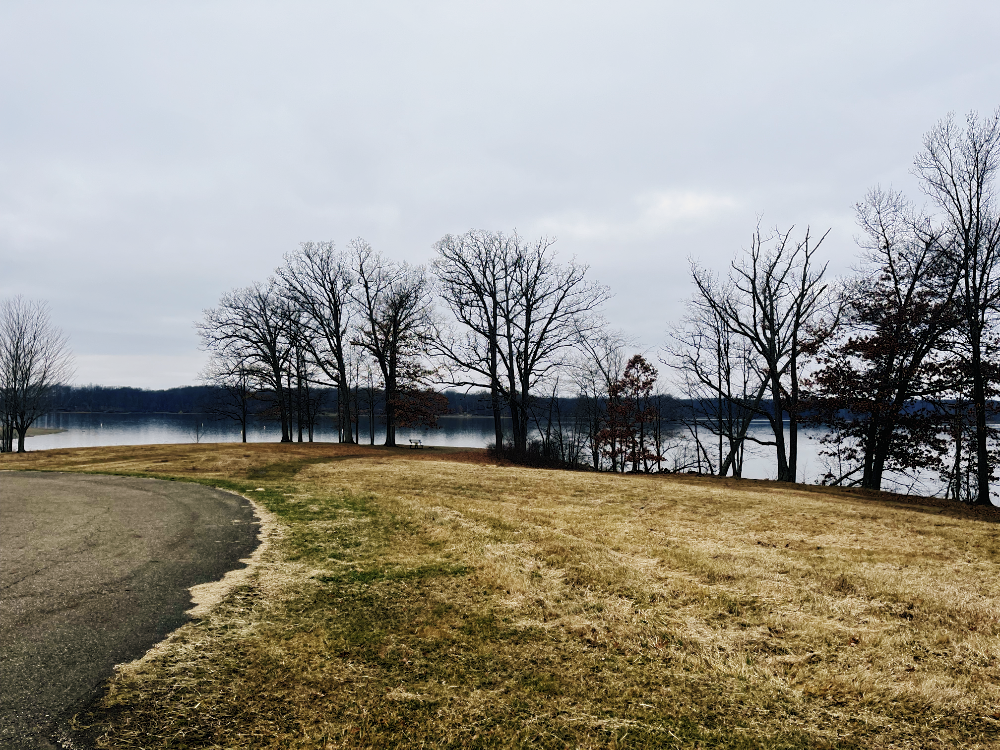
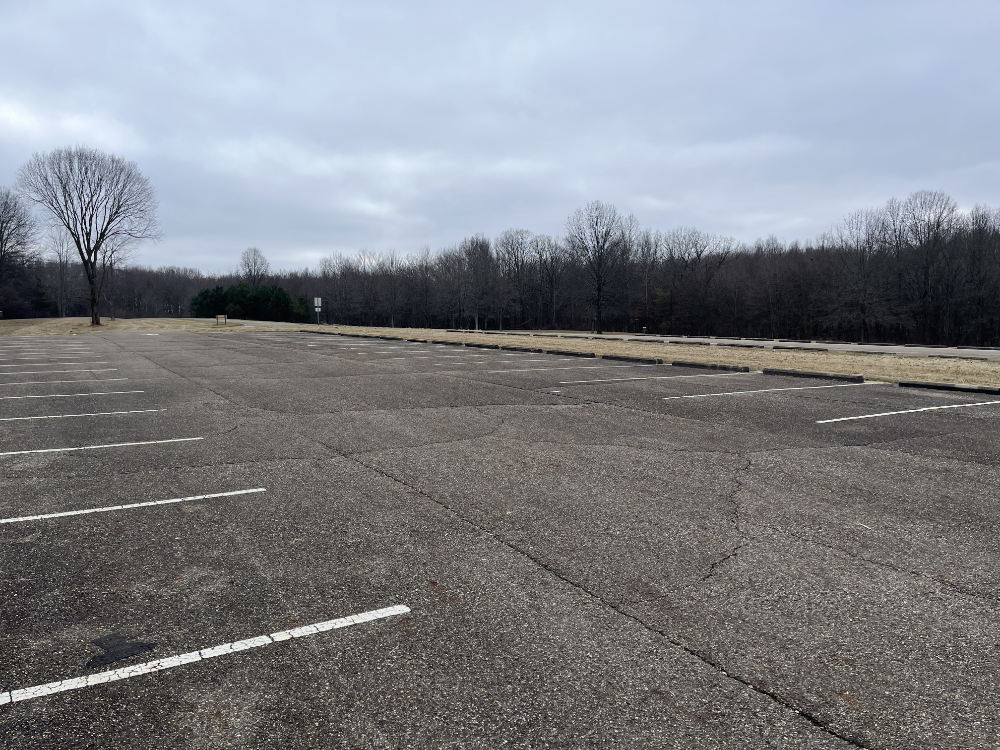
What Gear To Use
I have come to appreciate and adore the efficiency of a wire antenna in a tree. I keep a random wire antenna and a 40-20-10 in my bag with a weight and throw line. It’s an elegant solution and it always works.
But…
There are a number of parks where putting lines into trees is not welcome. It’s also true that it can be distracting to have line in trees and wires dangling. If one is going to take this approach, there is a lot more to the site management portion of the activation. It’s up to the operator to ensure the safety of the other park patrons. This means that a wire in a tree might not be a great solution. I wouldn’t even consider it in more heavily travelled parks.
Masts are great for deploying wire antennas. I like to take a mast with me when I ride my bike to the park as I have a couple of clamps that will hold the mast to my bike and that removes the requirements for guying out the mast and making more of a mess. At that point, I’m really just managing the antenna and the feedline. I got pretty good at that deployment strategy last summer.
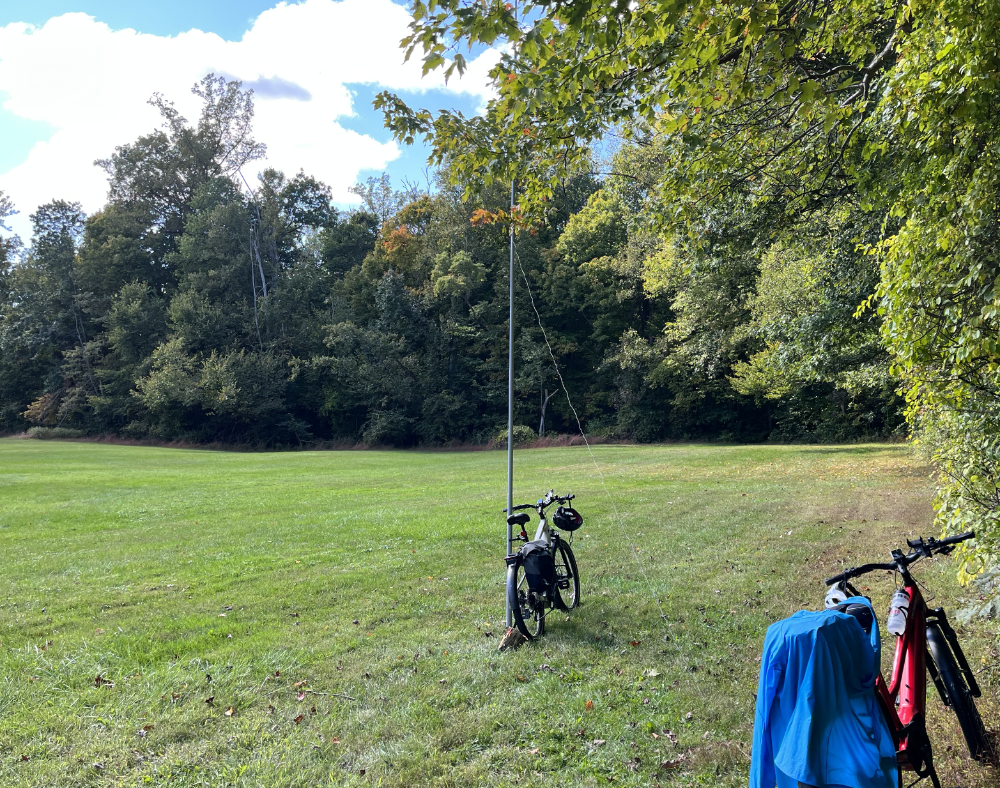
But…
Masts do draw attention to themselves. It’s difficult to minimize that. Sometimes, it’s easier to deploy a whip with a ground spike. I have a Chameleon setup that works every time. I always use it when we go camping because it’s low-profile when setup behind our camper and I can keep it close to the camper itself so that I don’t have a feedline out there waiting for one of the dogs to get wound up in it.
But…
Whips and spike mounted antennas still have radials to be managed. I find it’s easier to manage them because the antenna can be deployed out of the path of most other park visitors. That said, there are plenty of parks that do not allow for spikes to be driven into the ground. I keep a nifty clamp for my Chameleon whip on hand to attach it to a grill or picnic table to avoid breaking that rule.
All of that said…
Look, I broke down and got the Elecraft AX1 after watching a ton of videos where Thomas K4SWL went off and made more than enough contacts with really good distances with that little antenna. It’s almost impossible to see if you’re at a picnic table, it doesn’t require anything more than my cool table clamp or even the bipod to keep it upright, and it’s quick to setup and tear down. It doesn’t even feel like a compromise most times. I’m still getting coast to coast and Europe in there. There is a counterpoise, but it’s easily managed. Is this antenna for everyone? No. But boy does it work for me!
Modes
I’ve talked at length about how I don’t like doing phone at the park. Sitting at a picnic table and having what sounds a very dull phone conversation not unlike what one might expect in a call center isn’t something that I enjoy. I do OSPOTA every year and I will hunt with phone, but activating using phone isn’t my thing. What’s that mean?
I was very much a digital activator for most of my early POTA career. I have tuned my digital portable station to the point where there is very little left to optimize (in my opinion at this date). I can set up quickly and activate a park using FT8/FT4 or even RTTY. I’d love to get more digital modes into my repertoire and that’s something I’m working toward. Sure, I have to carry around my tablet and manage that, but it’s fun! It’s also QUIET.
The other mode that I’m finding is very low-profile is CW. It further reduces the footprint of my station and, through the judicious use of headphones, produces no impact on the park around me. The AX1 is fantastic on CW. QRP and CW go hand in hand. My key doesn’t make a sound that anyone can hear unless they are sitting right on rop of me in which case, I care a lot less about the noise.
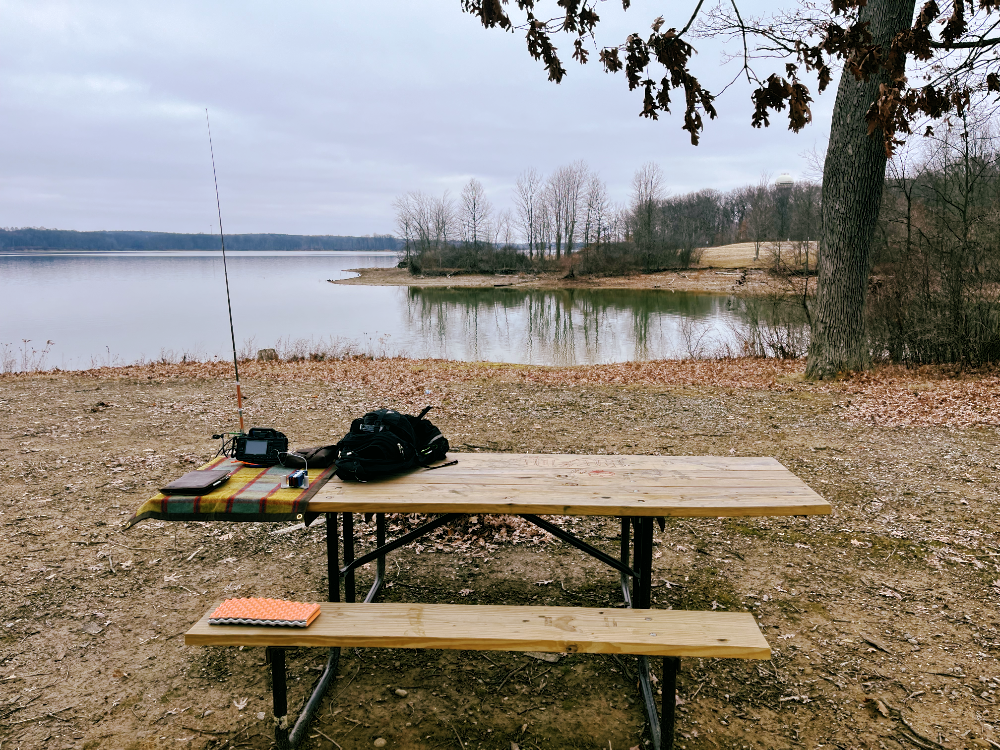
We don’t talk about this enough: We need to respect the sonic space of a park.
Is there anything more irritating when you’re camping than to hear the music of the site next to you? Is there anything less fun than being on a hike and unable to pass a group with a Bluetooth speaker that is cranking out song after song that gets in the way of you hearing the breeze in the trees or the river and the birds? Personally, I would rather sit next to a crying baby on a Trans-Atlantic flight than listen to the oldies coming out of a tinny speaker hanging from the fannypack of a speed-walking grandmother.
What’s that mean? It means that I want to have a little empathy for other park visitors and make sure that the sound of my radio goes into a pair of headphones rather than into the sonic space we’re sharing. No one wants to hear the beeping of my rig or the voices coming to me from the west coast. I’m very mindful of that. Keeping myself unheard is very important to me.
My Personal Practice
As you can see in the above photos, I’ve been frequenting a park that could be the set of a post-apocalyptic thriller. In fact, on Sunday, the only humans I saw at the park were this fisherman:
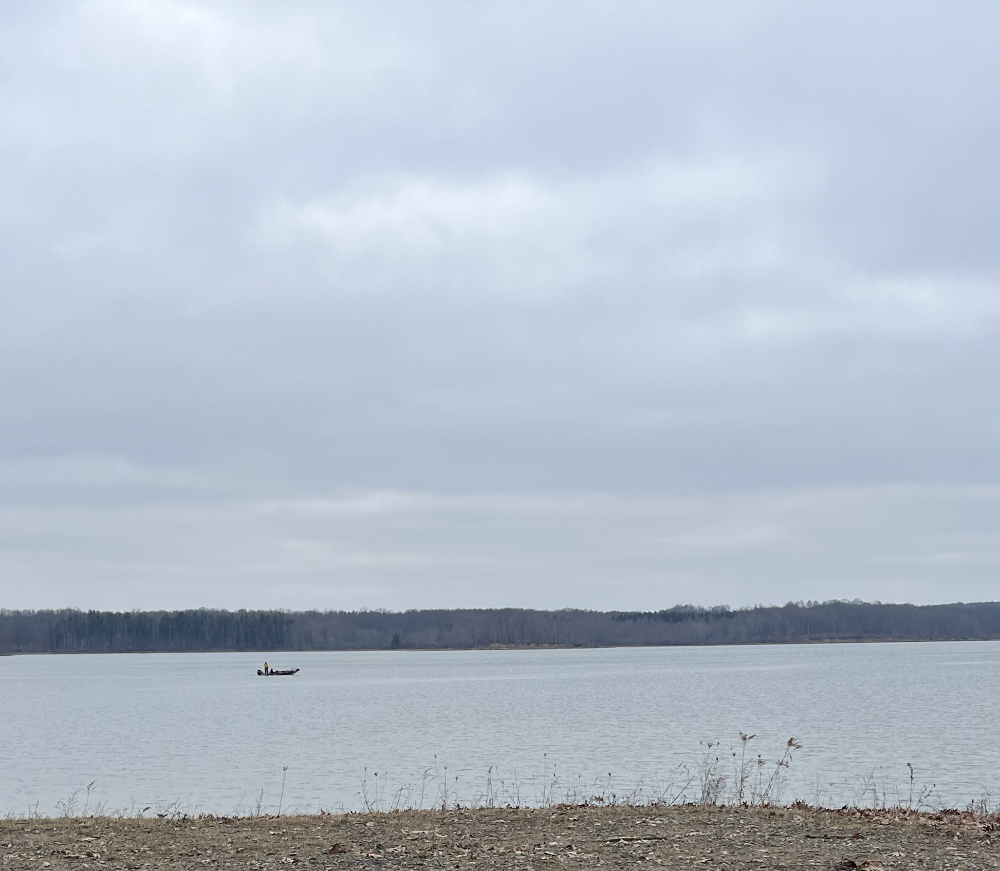
and two people paddling kayaks in February in Northeast Ohio. Yeah. The water is liquid, gotta be in the boat. I have to imagine that they’re pretty chilly sitting on the water like that.
I’ve talked with one ranger in my entire time visiting this park. I’m including my childhood in that. He was out emptying trash and I asked him a couple of questions about the facilities that were being torn down. Good chat. He asked what I was doing and nodded along. OSPOTA has been around a long time and the parks department is well aware of us. It’s a good relationship.
In short, I go where it’s not crowded and use as little gear as possible, in the most compact way it can be deployed. Those are the guidelines. How does it work in practice?
Saturday Activation (10-Feb-2024)
I got to the park Saturday morning and set up. It was a dramatic and overcast day. There was a touch of wind – more than I’d normally like – but it was warm enough that I didn’t need gloves for most of the time I was out there.
40-meters was respectable and treating me well. I got most of my activation done there and then switched over to 30-meters. I managed to grab two contacts there and then…rain. Unpredicted rain. Cold, miserable, throw-the-radio-in-the-pack rain. I got everything packed up and headed out. I didn’t feel like setting up in the Jeep, so I went home and grabbed a nap.
QSO Map
The reach wasn’t all that impressive, but I got the contacts I needed. Not too shabby for 5 watts.
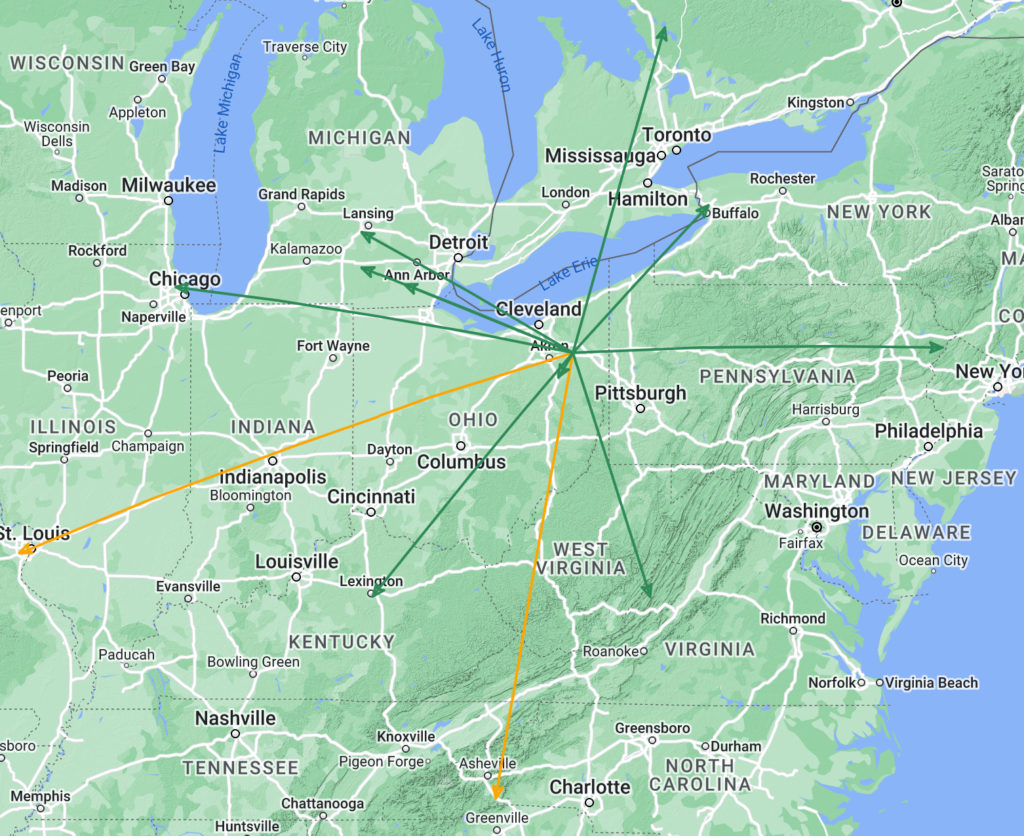
Sunday Activation (11-Feb-2024)
Superbowl Sunday is a great day to go to the park. There’s no one there. As I said above, there was not a single car anywhere in sight. Nor were there dog walkers or people fishing along the shore. It was me and the boats.
I got on the air and went from 40-meters which was maybe not as chatty as the day before and jumped right over to 20-meters. That was zipping along as one would expect. There was plenty of fading and QSB as the hour progressed and I got some fun comments in the POTA.app spotting log.

But the upside was getting my Mastodon buddy WJ3FF in the log with a more proper contact than our last go:

Remember gang, always read the POTA spots if you can. There’s fun stuff in there.
QSO Map
A little more distance than the day before.
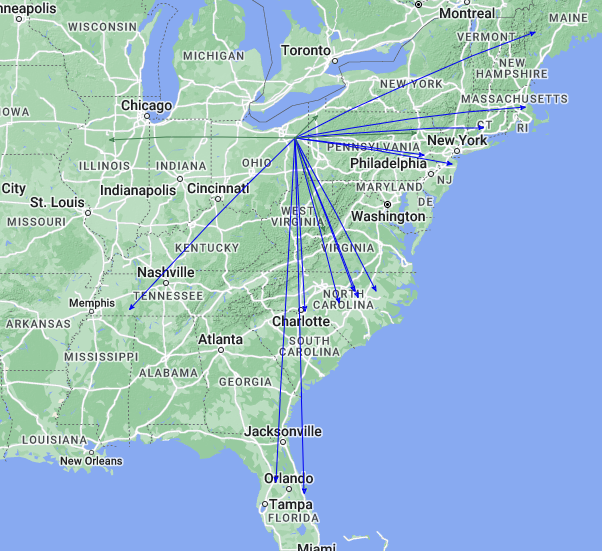
Final
There is no doubt that when we’re out in the parks activating, we are representatives of the entire ham radio community. Not just POTA, but all hams. Poor behavior on the part of a single operator will sour other park patrons and park staff to our presence as a whole. The last thing anyone should want to do is wreck a great hobby for others. Being polite and respectful are table stakes here. If anything, we should go above and beyond the basic expectations of park goers and do what we can to leave the place better than we found it.
Thanks for reading and 72!
![]()
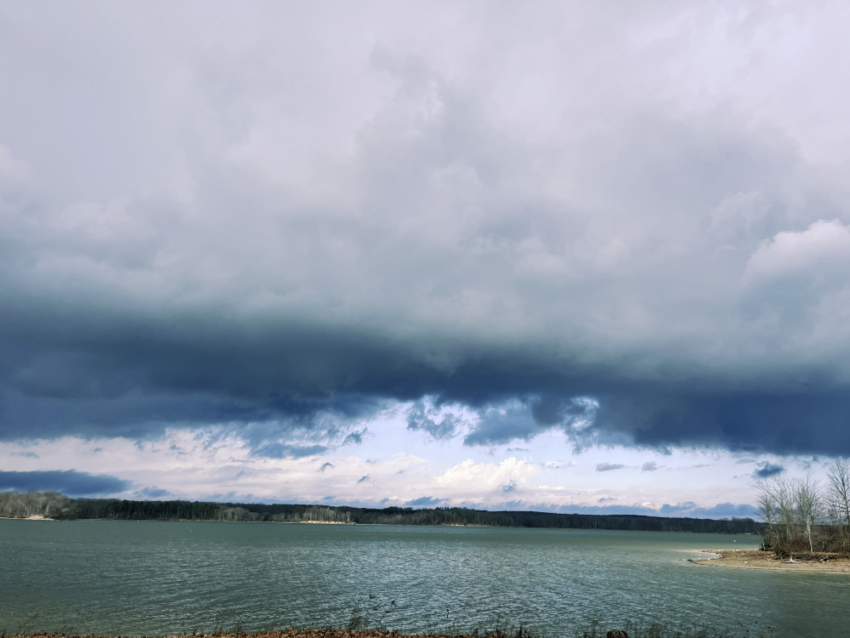
1 thought on “Low Impact Activations”
Comments are closed.